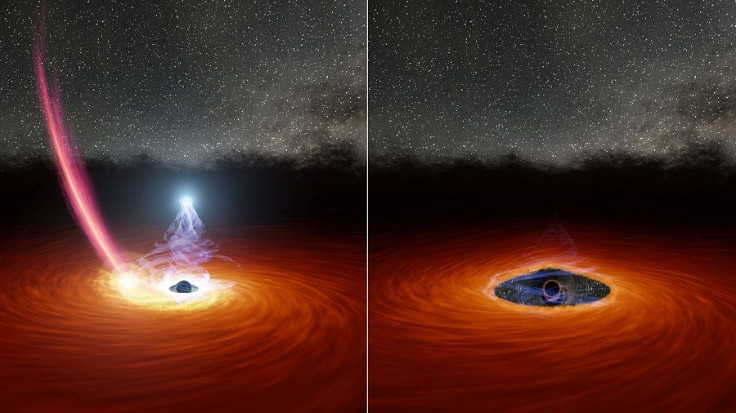Black Hole Mystery: Disappearance And Reappearance Of Black Hole's Corona Puzzles Scientists

KEY POINTS
- Astronomers observed the corona of a black hole disappear after a sudden flash
- In less than a year, the black hole's corona was no longer detectable
- Eventually, the corona reappeared and was nearly back to normal in a few months
- The astronomers believe the event was likely caused by a wayward star
Astronomers got to observe the disappearance and eventual reappearance of the corona of a supermassive black hole 100 million light years away. It was the first time for scientists to observe such a mysterious event.
When black holes feed, the materials falling into it form a massive disk that slowly swirls around it. At this disk's center, very close to the black hole, is a region of ultrahot electrons known as the corona, which has temperatures reaching a billion degrees and produces X-rays so brilliant that can be seen from 300 million light years away.
About two years ago, a team of astronomers witnessed the X-rays of a black hole's corona mysteriously disappear and eventually reappear. The All-Sky Automated Survey for Super-Novae (ASASSN) captured a sudden burst of brightness 40 times the normal luminosity in galaxy 1ES 1927+654 and then, using several other telescopes, the astronomers watched its brightness drop by 10,000 in less than a year until the corona eventually became undetectable.
"We expect that luminosity changes this big should vary on timescales of many thousands to millions of years," study co-author Erin Kara of Massachusetts Institute of Technology (MIT) said in a news release. "But in this object, we saw it change by 10,000 over a year, and it even changed by a factor of 100 in eight hours, which is just totally unheard of and really mind-boggling."
Further, as the astronomers continued to watch the black hole, they also witnessed its corona's reappearance. In fact, in just a few months, it was already close to its original luminosity and eventually became even brighter than before the event.
"This seems to be the first time we've ever seen a corona first of all disappear, but then also rebuild itself, and we're watching this in real-time," Kara said.
Researchers believe the mysterious disappearance was likely caused by a wayward star that was shredded by the gravitational pull of the black hole, causing the initial flash that they detected. Then, as the stellar material fell into the disk, it might have affected the disk's magnetic field, causing the corona to disperse and disappear.
That said, the authors do note that there are other possible explanations for the event, especially since it was an unprecedented one. They were able to thoroughly gather data from various telescopes and satellites, including NASA's Neutron Star Interior Composition Explorer (NICER) aboard the International Space Station, the Neil Gehrels Swift Laboratory and, the Nuclear Spectroscopic Telescope Array (NuSTAR). This way, they can further study the data to unravel the mystery.
"Will this feeding black hole return to the state it was in before the disruption event? Or has the system been fundamentally changed? We're continuing our observations to find out," study co-author and NICER astrophysicist Michael Loewenstein of the University of Maryland College Park said in a news release from NASA.
The study describing the event is published in the Astrophysical Journal Letters.
© Copyright IBTimes 2025. All rights reserved.






















